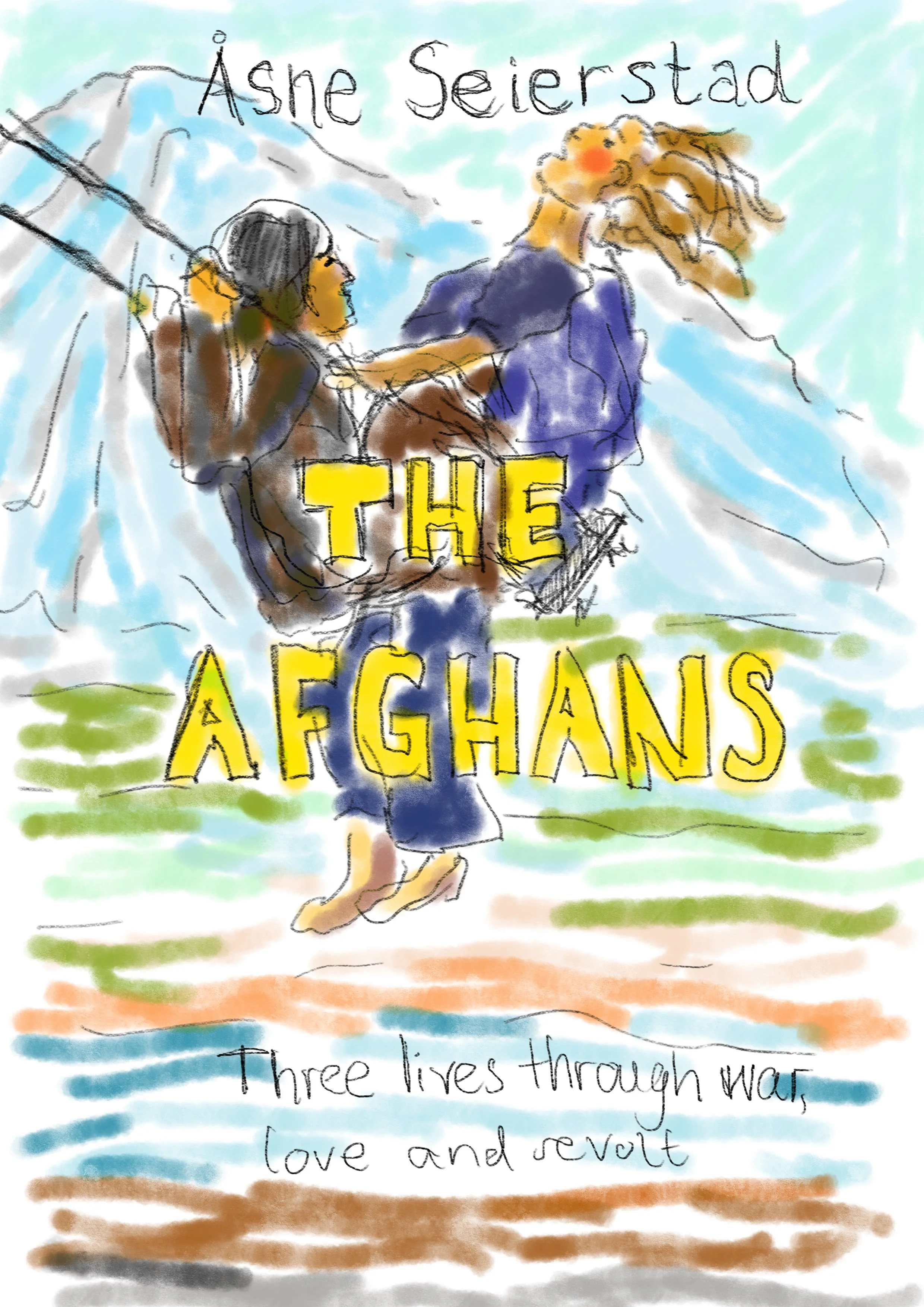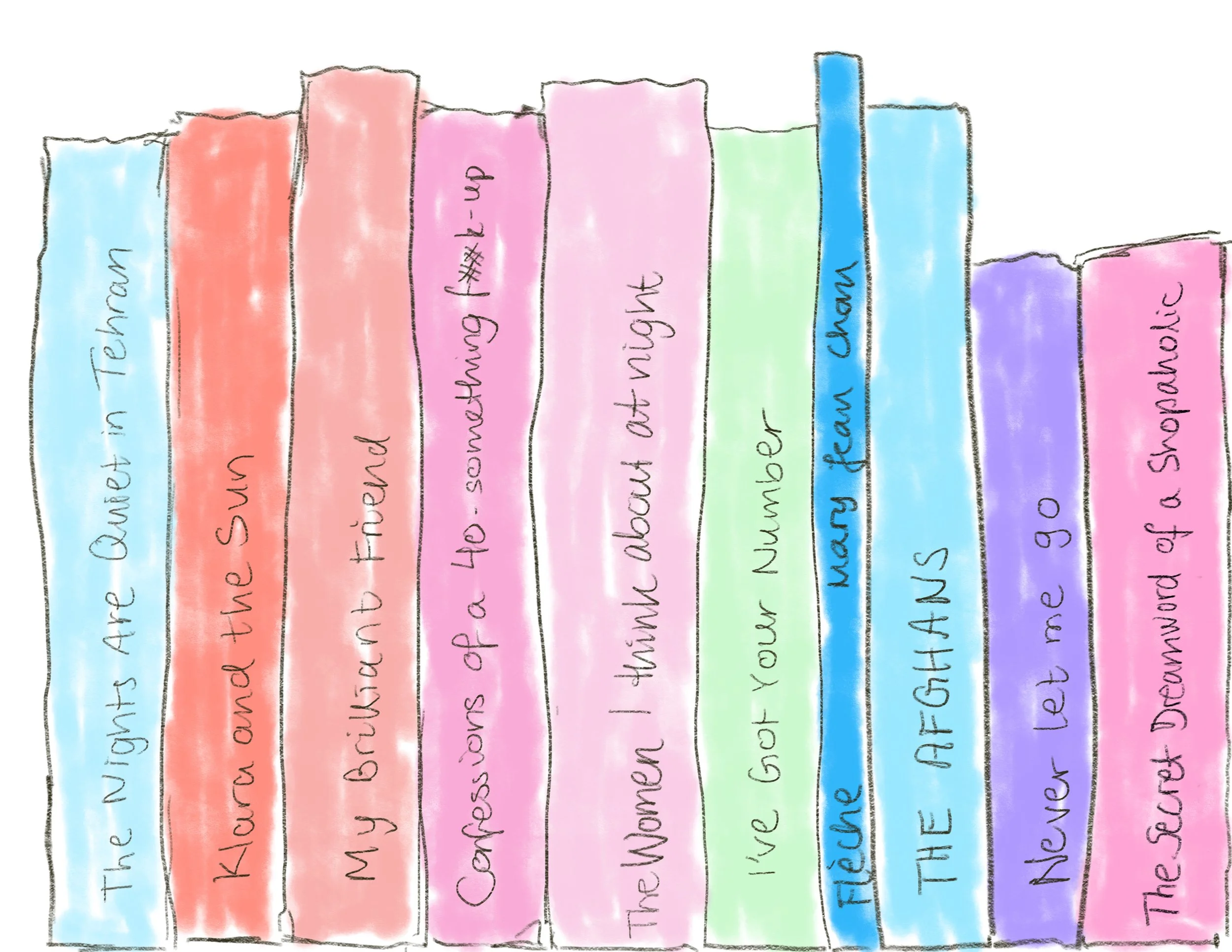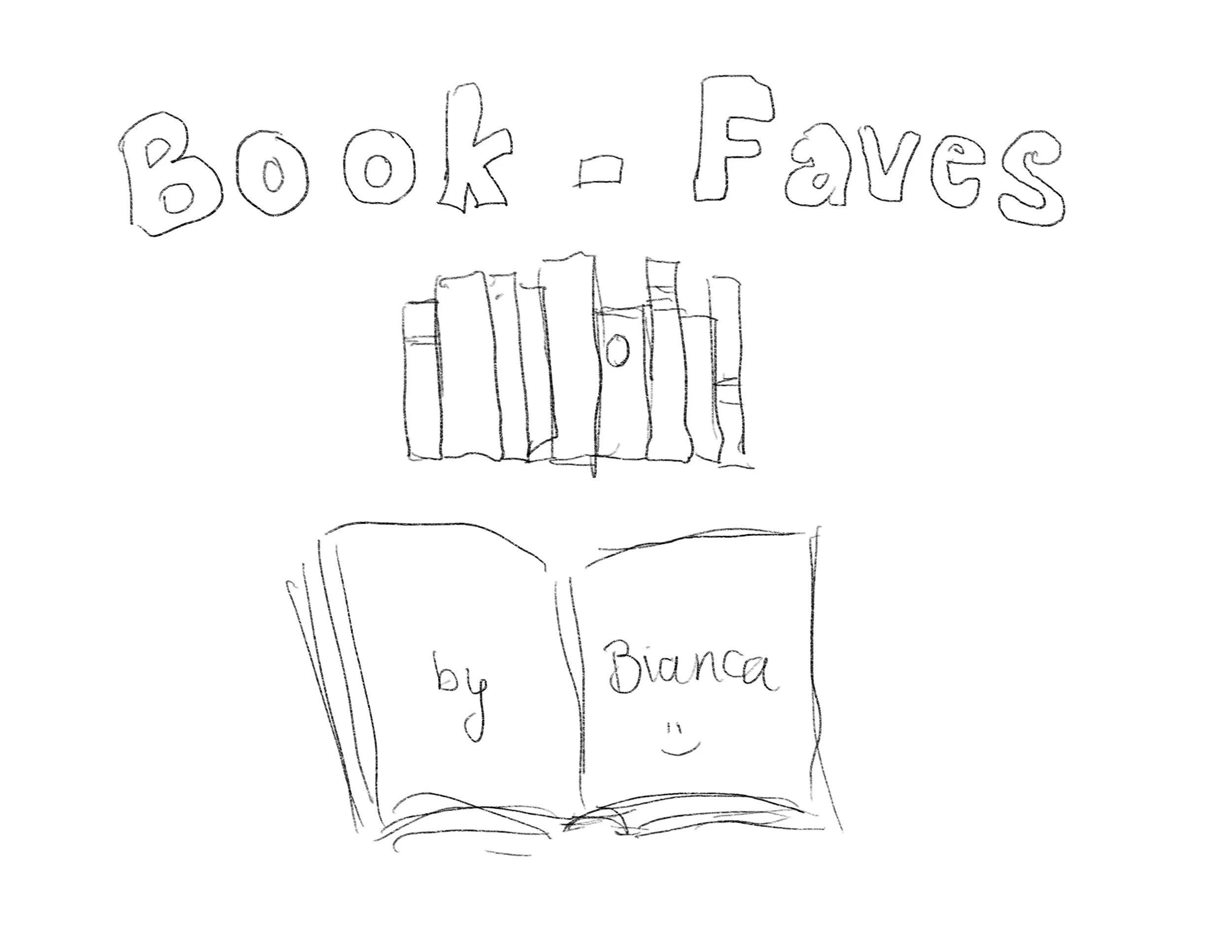What to read next: My favorite books to get you back into reading
If you are looking for inspiring new reads or general tips for how best to spend any gift cards received during the holiday season, let me share some of the books I always love to recommend – maybe my favorites will become your new faves of 2025?
My attempt at replicating the English cover of “The Afghans”. Maybe I’ll drop the illustrations for the next post.
“The Afghans” and “The Bookseller of Kabul” by Åsne Seierstad
Åsne Seierstad is a great writer, and “The Afghans” is definitely one of the best books I’ve read in the last few years. Both of them are non-fiction, but they are written in such an engaging way that it basically feels like you’re reading a novel. You get to delve into the daily (and private) lives and realities of the characters Seierstad meets during her travels. They’re both set in Afghanistan but written 20 years apart. “The Afghans” follows three main characters, Jamila, Bashir, and Ariana. Jamila is born in Kabul in 1976 during a time where the more liberal ways of life in Afghanistan are coming under pressure before the Soviet invasion. Jamila has a disability, so her father permits her to go to school because she won’t be married anyway. We follow her budding desire to make a difference for Afghan women. Bashir is born in 1987 as the war comes to an end. He becomes part of the Taliban to fight for jihad around the time where Bin Laden orchestrates 9/11. He is a firm believer in the cause and quickly rises in the ranks. Ariana is born in 2000 and grows up with the message that education is the way forward and the world is open to her – only to face a new Taliban rule and the end to her freedom in 2021.
I found this book so interesting and challenging because of the different viewpoints we’re presented with; quite different perspectives, particularly that of Bashir and his fight for the Taliban. I think Seierstad manages to make both her characters and this time in history really accessible.
“The Bookseller of Kabul” was published in 2002 and follows the family that Seierstad lives with, a bookseller named Sultan Khan and his wives and children. I think her method is incredibly interesting and impressive – Åsne Seierstad is a Norwegian journalist, and for these books, she lived in Afghanistan, sometimes in disguise, with the people she based her characters on and basically became part of the household to be able to observe and describe how ordinary Afghans have been affected by changing political situations. Because she was an outsider, she could move through the various social spheres more easily.
If you’re hesitant about reading them (they’re quite long!), I believe at least “The Bookseller of Kabul” is available as an audiobook. Great way to get back into books, highly recommend!
“The Women I Think About At Night” by Mia Kankimäki
No-no, not what it sounds like … This is a brilliant book by Finnish author Mia Kankimäki and it gives me vibes of an old-school explorer slash traveling book. Kankimäki is writing as herself, a childless woman in her 40s who feels stuck and bored in her life. When she can’t sleep at night, she thinks of the female artists and adventurers of history who have inspired her – Karen Blixen, Nelly Bly, Yayoi Kusama, Artemisia Gentileschi. She researches and discovers that often, these women were forging their own paths in their lives against all odds – often also in mid-life, childless and amazing. They inspire Kankimäki to leave her job, sell everything, and go on an adventure herself. She ends up traveling to Tanzania, Kenya, Japan, and Italy.
I love this book because it’s actually great to read a few chapters from before bedtime. It’s a mix of memoir, biography, and logs from her travels, with this sense of picking yourself up again and diving into the adventure. Mia Kankimäki, if you ever read this – you’re one of the Women I think About At Night too. I wish more of your books were translated into English; am saving space for them in my heart.
“My Brilliant Friend” by Elena Ferrante
In the past few years, my top-top recommendation has been “My Brilliant Friend” by Elena Ferrante (and the rest of her Neapolitan novels). It honestly made me feel quite brilliant to be able to recommend such a fantastic book to people, until it recently made it onto The New York Times 100 Best Books of the 21st Century list as #1 out of the 100 … Turns out, I’m not very original and it’s just a great book. The list is compiled by critics and editors of the NYT as well as 503 writers and academics, so if you wanted backing-up of my opinions, I guess those numbers are pretty good.
But Bianca, why is this book so highly ranked? I think it’s just that “My Brilliant Friend” has really well-written characters. Strong and intelligent female protagonists with a deep friendship riddled with complicated emotions. But the book also offers an interesting and detailed insight into the culture of a small neighbourhood outside of Naples and the political situation in Italy during the 1950s and onwards. All four books follow the girls Lenù (Elena) and Lila (Raffaella), mainly focusing on their friendship, but also how the poverty and violence which dominated their hometown affects how they grow up and present themselves to the world. The writing is beautiful; my Italian friends tell me that they can’t imagine how Ferrante’s prose could ever be captured properly in translation. I think they did a pretty good job, just from reading it in English (shout-out to Ann Goldstein, the translator) – perhaps a pro tip is: if you speak Italian, read it in the original. That’s a pretty good tip in general.
My favorite part about “My Brilliant Friend” was how Ferrante managed to capture the strong bond between the two girls, which has so much love but also fierce rivalry; how the narrator mirrors herself in her friend but is simultaneously jealous and angry and determined to beat her. Basically, it’s just a really good example of a coming-of-age novel. Some of my oldest favorite books (“Anne of Green Gables” by L.M. Montgomery and “Little House on the Prairie” by Laura Ingalls Wilder) have a similar structure to the Neapolitan Quartet, as it follows young female characters from their childhood, into girlhood, adolescence, and adulthood. I love when books follow a whole life, showing how friendships change and how the way you perceive yourself changes too.
You don’t have to read the whole series, but definitely give the first book a go. I hope in particular you’ll enjoy how the writing reflects the changing perceptions of Lenù as she grows: from a 6-year-old playing with her best friend to the narration of a young woman who desperately wants to make her own mark in the world, competing with - her brilliant friend.
Fun fact: Elena Ferrante is actually a pseudonym, and the author has remained anonymous since their first novel was published in 1992. I can’t explain why, but I think it makes me like the books even more.
The color scheme of my faves go surprisingly well together.
“Never Let Me Go” by Kazuo Ishiguro
This is such a good read. The science fiction novel was published back in 2005, but I only read it a few years ago without much prior knowledge about the author or the plot and I feel like this is the best way to experience some of Ishiguro’s books. I’ll describe it briefly without giving too much away: “Never Let Me Go” follows three protagonists; Kathy H, Ruth C and Tommy D. Kathy tells the story from her perspective as an adult, reminiscing about attending the boarding school Hailsham with Ruth and Tommy. It feels like a coming of age story, but because it is set in an alternative version of England, it also has elements of dystopian fiction, which I really enjoyed. My favorite part about this book was how there was an underlying sense of unease, little hints dropped in the otherwise calm and idyllic writing. I won’t reveal the plot twist here but I loved that there was this great ethical-dilemma secret kept from the students of Hailsham and that, once they discover it, they still muster this burning tragic hope throughout the rest of the book, which remains to be seen whether pays off.
While speaking of Ishiguro, I would also always recommend his book “Klara and the Sun”, if you are a fan of “Never Let Me Go”, as it has a similar vibe, dystopian science fiction. It follows the narration of Klara, who is a type of robot known as an “artificial friend”, made to accompany children. She is chosen by Josie, who is quite ill. Again, there’s a secret ethical-dilemma plot-twist in this story which I won’t reveal, but Klara is solar driven which means a lot of her narration is also focused on “the Sun”, whom she appreciates deeply for giving her “nourishment”. The storytelling must have left an impression on me, cause I still sometimes think “Ah, the Sun and his nourishment” if I’m sat in direct warm sunlight for any period of time. Ishiguro is also the 2017 winner of the Nobel Prize in literature.
“Flèche” by Mary Jean Chan
A bit of poetry for the mix – this collection of poems is written by Hong Kong born Chan, who writes quite beautifully and painfully honest about her relationship with her mother, the expectations to her as a girl in Chinese culture, and the fact that she is dating a woman. I really enjoyed the depiction of the mother-daughter relationship and the pain she feels while navigating her queerness and her culture, or rather straddling multiple cultures and languages. Favorite poem from the collection is “//” because I think it’s really clever and sort of heartbreaking but also just great story-telling in the poetry format. She recently published another collection of poems (“Bright Fear”) which is on my to-read list.
Coincidentally, Mary Jean Chan is also an alumnus of my college at Oxford (Harris Manchester) and you bet they’re so totally chuffed about that. I am too, tbh.
Books by Sophie Kinsella & Alexandra Potter
If you’ve been in a reading-slump and find it hard to start any book, I’d recommend books by Sophie Kinsella, for example the classic “The Secret Dreamworld of a Shopaholic” or most of her other novels. Kinsella has recently published a new one, “The Burnout”, which my sister says is also excellent. One of my personal favorites is “I’ve got your number”. I think what Kinsella does really well is writing flawed but sweet and genuine female leads that feel relatable, even though they are really not relatable at all. (Am I a designer-loving, credit-card-maxing woman keeping secrets from her rich boyfriend, or a scatter-brained engaged girlie who has lost her expensive ring and starts using a stolen phone? No. But, gurl, I feel y’all). The plotlines are always really entertaining and easy to get into. Along a similar line (and perhaps stealing a bit of Kinsella’s mojo) is the recent “Confessions of a 40-something f##k-up” by Alexandra Potter. The writing style and tone is similar, except the protagonist is a bit older and perhaps more modern. I’ve been told by friends that Potter’s books really got them back into the habit of reading because they’re easy to consume. It doesn’t matter if it’s not grand literature or hasn’t won a Nobel Prize. I think the worst thing a book can be is boring – and both Kinsella and Potter’s books are certainly not that. Guilty-pleasure your way back into the swing of things! I love them.
“The nights are quiet in Tehran” by Shida Bazyar
Loved everything about this book but would recommend it especially for the writing, which is both subtle and beautiful and full of emotion. It follows an Iranian family’s flight from and return to Iran over multiple generations. Starting in 1979, we meet Behsad, who is a young revolutionary fighting alongside his friends for a new system in Iran. He falls in love with Nahid, a brave and beautiful literary student. But a decade later, Behsad and Nahid see themselves fleeing the country, going into exile in Germany with their young family. Laleh and Mo, their children, grow up in Germany and feel the immense longing and worry of their parents for their home country. Laleh returns to Iran with her sister Tara and Nahid in 1999, where the country is completely different from what she remembers. Mo struggles with feeling connected to Iran, because his whole life and friends are in Germany.
I think what spoke to me the most in this book was Laleh and Mo’s experience of growing up in Germany with parents that weren’t native to the country. For example, there’s an example of how they have to sit in on the doctor’s appointments or parent-teacher meetings at school with their parents, so they can translate for them, or they describe how people look at their family differently, which they of course notice, even as kids. It’s just all those little things one has to navigate which made this book feel so real and heart-wrenching, in a way. Other than that, it’s just so beautifully written and super interesting to learn about this period of Iran’s history.
One of the best books I read last year for sure! Also, it’s Bazyar’s debut novel which is so cool. I read it in German but it’s being published in English by Scribe this year!


